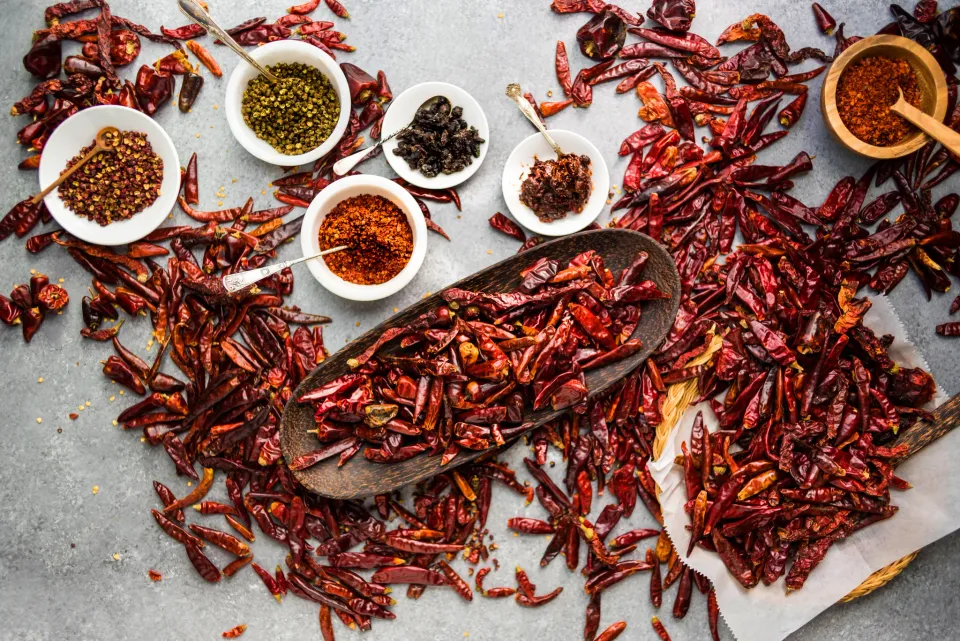Important Topic: We can't escape from talking about Sichuan Cuisine.
We've got 24 hours a day, even in the 7th day, we need at least 2 hours a day to eat, excluding cooking time or waiting for the dishes in a restaurant, for some people, the eating time can make up to 5-7 hours a day, when the meals are involved with socially purpose. After all, it is hard to believe but true that 9-23% of our life time is used for eating. It is necessary to take cuisine seriously.
I am from Sichuan, China, where Sichuan cuisine originates. Sichuan cuisine is also known as Szechuan cuisine, is a popular and spicy Chinese culinary tradition hailing from the Sichuan province. Known for its bold and fiery flavors, it incorporates ingredients like Sichuan peppercorns and chili peppers to create a unique and mouth-numbing sensation called "mala." Signature dishes include Kung Pao chicken, Mapo tofu, and Sichuan hot pot. Sichuan cuisine balances spiciness with complex flavors, often featuring garlic, ginger, and various seasonings. It's celebrated for its diverse textures and aromatic dishes, making it a beloved and influential regional cuisine both in China and around the world.
The facts are usually more interesting to know, other than stereotype caused by extremely simplified explanation. Here are some facts about Sichuan food as below:
Fact 1 - Sichuan cuisine is more than MALA.
The soul of Sichuan food is the art of combination of 7 basic flavors or sensations:
- sour
- sweet
- numbing
- spicy
- bitter
- unami
- salty
My master chef friends in Sichuan don't agree with the impression explained above. The professionals say that there are 24 flavor types in Sichuan cuisine, and only 10 of them are related to chili kind of spicy. To be noted, there is one flavor type called sour and spicy in cold and hot dishes, which is counted twice, in this case, some professionals believe there are only 23 flavor types. The traditional complex flavors are different combinations matching different main materials. If there are more materials joining Sichuan food, there could be more complex flavors.
Fact 2 - Featured cuisine must evolute its shape with its soul.
There are 2 kinds of Sichuan food, the authentic Sichuan food and internationalized Sichuan food. There is no need to argue which one is better. Due to the historical immigration process, the Chinese culinary culture started its influence firstly in Southeast Asia. The influence is never one way only, and the ingredients limitations urged cooks to improvise with whatever they can find. Later, when the immigration process carried on, Sichuan food is no longer the same as its look and original recipes, but the soul of Sichuan food still exists: the combination of flavors. The intrinsic driving force of recipes evolution also relates to the local preferences and culture. If Sichuan food stays authentic, it could less acceptable for locals, how can a Sichuan restaurant survive?
Sichuan food is spicy for many reasons, one of which is that people in Sichuan need to eat spicy food to stay healthy. According to Chinese Traditional Medicine, people need to consume spicy and numbing foods with a "fire" attribute to counteract the "water" attribute of a humid environment. In contrary, Cantonese people don't need to eat spicy food. Some Sichuan people moved to Canton, and if they keep eating spicy food as spicy as in Sichuan, they could suffer from painful acne on their skins or oral ulcers.
Fact 3 - Sichuan food is not a closed culinary culture or system.
In the history, there are a few significant immigration to Sichuan provinces. People moved to Sichuan for many reasons from all over China. People from Northeast China brought Lu Cuisine dishes to Sichuan, then Sichuan cuisine absorbed some Lu cuisine dishes. People from Southern China brought Cantonese cuisine to Sichuan and then spicified. All the historical large immigrations injected other food culture into Sichuan cuisine, so that is why some dishes can be found in both Sichuan cuisine and other cuisine. In short, Sichuan cuisine can be mixture of all regional cuisine system in China.
There are more facts to be added.
In the end of this page, I would love to invite you to join one of our culinary culture research project. It might take you 5 mins to fill the form in the link below:

